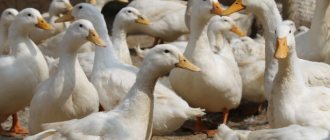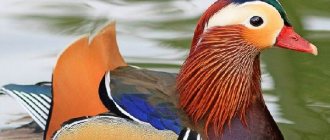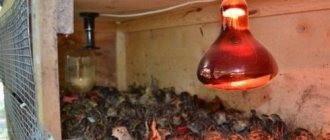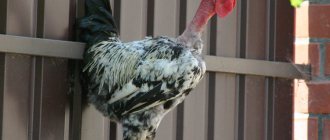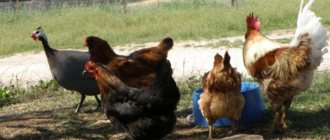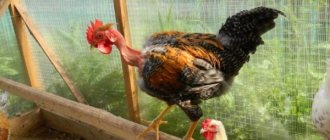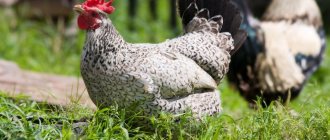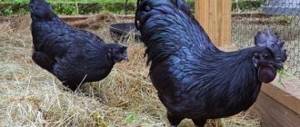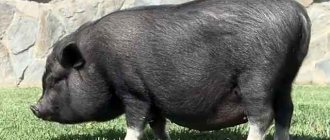Making cages for ducks with your own hands is not difficult, the main thing is to choose suitable materials and strictly follow the instructions. Although these birds do not require extensive care, they must be kept in suitable conditions. Most farmers keep ducks in large enclosures or poultry houses and let them roam freely. However, in some cases, a permanent home built to specific standards may be the best option.
Briefly about the main thing
Caged housing of ducks is usually used on large poultry farms in order to save space with a large number of livestock. In such cases, the following criteria are taken into account:
- 1 m2 for 30-40 newborn ducklings;
- 1 m2 per 10 birds three weeks old;
- 1 m2 for 1-3 adult ducks.
In a private farm in a private yard, a farmer can keep a small number of ducks in a spacious poultry house, with the possibility of free range. This option is discussed in the article “What you need to know about breeding and keeping ducks.”
But if you have little space or a lot of ducks, and you decide to place them in cages or boxes, then you must be prepared for the fact that such conditions differ from the usual keeping.
Breeding ducks at home
The wholesale air temperature in the poultry house is 18-20C, the air humidity ratio is 70%.
Molting is organized when the intensity of egg laying in ducks decreases to 40%.
Molting is caused in different ways and techniques. Drakes are not forced to molt. Therefore, during the period of forced molting, males should be kept separately.
Raising ducks for meat
For meat production, ducklings are raised without walking on deep permanent bedding, on mesh or slatted floors and in battery cages. There are technologies that use combined rearing with keeping ducks in summer camps and feedlots.
Sets of equipment KMU-I0 and KMU-15 have been developed, which are intended for keeping young animals from 1 to 55 days of age. In terms of its technical characteristics, this equipment is similar to KRU-3.
The air temperature in the poultry house should be 20-23, 18-20 and 16-18 ° C, respectively. Older ducklings do not need additional heating, but the temperature in the room is maintained at 15-18C, and the relative humidity is at 65-75%.
Read also: Growing thuja in pots outdoors
If the stocking density is too high, aggression and competition arise, the viability and weight of the bird decrease, and cannibalism begins to appear. The stocking density of Peking breed ducklings up to 3 weeks of age should not exceed 16 birds/m2, for older ducklings - 8 birds/m2 of floor area. The size of groups when raising young animals up to 3 weeks of age is no more than 300, and over 3 weeks of age - no more than 150 animals. In duck farming, it is necessary to strictly adhere to the timing of poultry slaughter. This is due to the fact that at 55-60 days the juvenile molt begins - old feathers fall out and the beginnings of new ones (hemps) appear, which are difficult to remove during plucking. In this regard, the presentation and grade of carcasses sharply deteriorate. Therefore, the maximum period for growing Peking ducklings is 8, and for musk ducklings - 10-12 weeks.
Technology for raising ducklings on mesh floors
for raising ducklings up to 2-3 weeks of age, use a mesh with a cell size of 12 x 12 mm. After 2-3 weeks of age, the cell sizes can be increased to 30 x 30 mm.
Advantages of growing: higher stocking density, no contact between poultry and droppings, dry floor, eliminated costs for bedding material.
Technology of raising young animals in cage batteries
For this purpose, cages intended for chickens are converted. In this case, they are raised in cages either from one day of age until slaughter, or from one day to 2-3 weeks of age, with their subsequent transfer to deep litter, mesh floors, summer camps or feedlots.
Fattening ducks for fatty liver
It has been established that musk ducks and their hybrids with domestic ducks - mulards - are most suitable for this purpose. The best results have been obtained from crossing musk drakes with Peking ducks.
As VNITIP scientists recommend, interspecific hybrids intended for forced fattening at 30 days of age are grown according to the standards adopted for young meat animals.
During the preparatory period, from 30 days onwards, it is advisable to transfer the ducklings to pastures or combine grazing with the provision of green food. In the summer, 3 weeks before placement for fattening, they are fed 400-500 g of green feed and 200-250 g of corn grain per head.
At 3-3.5 months they are put on forced fattening.
The body weight of males at the beginning of fattening db is not lower than 3.2, and for females - 2.8 kg.
The feed used is corn steamed with hot water, to which 1% table salt, 1% vegetable oil, and a mixture of vitamins are added. Forced fattening is carried out using a special machine with a screw working element designed to feed whole corn.
During fattening, the weight of the liver increases from 70-75g to 350-500g. The cost of corn per 1 kg of fatty liver is 23-25 kg.
Since ancient times, man has been hunting. This is necessary to maintain the vitality of the human body. Also, with meat, the body is enriched with essential vitamins, amino acids and proteins, which are consumed with energy. Over the years, humanity has been improving methods and options for keeping birds and animals at home.
Duck breeding technology is not simple. When deciding to keep ducks, remember that the issue of caring for ducklings is important. After all, both the safety and growth of the young animals depend on this. There is floor keeping of ducks, as well as keeping in cages. Let's consider the issues of breeding ducklings using a more modern method - keeping them in cages.
Rice. 1 cage with mesh floor
One of the common ways to keep ducklings in cages is a cage with a mesh floor.
Let's consider the advantages of these cells. If the floor is mesh, it is very convenient to remove duck droppings, since under the mesh there is a tray into which droppings constantly fall, and which is very convenient for poultry houses to remove.
Primary requirements
Duckling cages are made from 25/12 mm metal mesh. For the walls you need to choose a mesh with slightly larger cells. There should be a plastic tray underneath to collect litter.
The area of one cell must be at least 300 cm2. If the breed is very large, then it is better to take a box with 500 cm2. It is also important to consider the height of the birds. On average, the height of the home should be 35-40 cm. The main thing is that the birds should be comfortable.
If you have a large number of ducks, it will be easier to install egg collection tapes in the cage - this will greatly simplify the work.
To save on household costs, it is better to purchase multi-tiered or single-tiered boxes for a small number of heads. The last option can be created with your own hands (more on this below).
Home preparation
In a cage, ducks will not be able to obtain food themselves, so it will be necessary to install feeders and drinkers. You can also save money here by making them yourself. Read about this in the articles “How to make a duck feeder with your own hands” and “How to make a water bowl for ducklings with your own hands.”
Before placing the ducks in the cage, all equipment should be cleaned and thoroughly rinsed under hot running water.
The duck house should also be disinfected with a special mixture of table salt and lime: pour 100 g of salt into 5 liters of water and add 1 kg of lime. Mix everything thoroughly and pour into a spray bottle. Avoid getting the mixture on your hands.
If you move chicks into the nesting house, cover the floor with paper or newspapers and remove it after a couple of days.
How to keep ducks at home?
And although older ducklings no longer need additional heating, the room temperature is maintained at 15-18 ° C, and the relative humidity at 65-75%.
Read also Mushrooms growing in the basement video
It is necessary to ensure that the stocking density of Peking ducklings up to 3 weeks of age does not exceed 16 birds per square meter, and for older ducklings - 8 birds per square meter of floor area. Groups of young animals up to 3 weeks of age should have no more than 300 heads, and groups older than 3 weeks - no more than 150 heads. It should be remembered that too high a stocking density provokes aggression and competition, while the viability and live weight of the bird decreases, and cannibalism occurs.
It is also necessary to strictly adhere to the timing of poultry slaughter. This is due to the fact that at 55-60 days juvenile molting begins - old feathers fall out and the beginnings of new ones (hemp) appear, which are difficult to remove during plucking, which sharply worsens the presentation and grade of carcasses. So the maximum period for growing Peking ducklings is 8, and for musk ducklings - 10-12 weeks.
Technology for raising ducklings on mesh floors
To raise ducklings up to 2-3 weeks, use a mesh with a cell size of 12x12 mm. After 2-3 weeks of age, the cell sizes can be increased to 30x30 mm.
This method makes it possible to increase stocking density, there is no contact between birds and droppings, the floor remains dry, and the cost of bedding material is completely eliminated.
Technology of raising young animals in battery cages
To do this, cages intended for chickens are converted. In this case, they are raised in cages either from one day of age until slaughter, or from one day to 2-3 weeks of age, with subsequent transfer to deep litter, mesh floors, summer camps or feedlots.
Fattening ducks for fatty liver
Muscovy ducks and their hybrids with domestic ducks—mulards—are best suited for such fattening. The best results have been obtained from crossing musk drakes with Peking ducks.
As VNITIP scientists recommend, interspecific hybrids intended for forced fattening up to 30 days of age are grown according to the standards adopted for young meat animals.
During the preparatory period, it is advisable to transfer 30-day-old ducklings to pastures or combine grazing with feeding green food. In the summer, 3 weeks before fattening, 400-500 g of green feed and 200-250 g of corn grain are fed per head.
At the age of 3-3.5 months they are put on forced fattening.
The live weight of males at the beginning of fattening should be no lower than 3.2, and that of females - 2.8 kg.
The feed used is corn steamed with hot water, to which 1% table salt, 1% vegetable oil, and a mixture of vitamins are added. Forced fattening is carried out using a special machine with a screw working element designed to feed whole corn.
During fattening, the weight of the liver increases from 70-75 g to 350-500 g. The cost of corn per 1 kg of fatty liver is 23-25 kg.
Features of keeping in a cage
Muscovy ducks are best suited for keeping and breeding offspring in a cage. They are more easily adapted to living without a pond and free grazing.
To move into a cage, select ducks of the same height and age so that they develop and grow equally.
Pets must be kept clean, otherwise their down and feathers will deteriorate and their weight gain will be slower.
Feeders are filled with food 3 times a day. Fresh water is added throughout the day - the hotter it is, the more often.
Birds should be fed high quality feed. This is the only way to compensate for living in cramped conditions and keep the ducks’ muscles in good shape.
For the greatest benefit from the brood, the temperature balance in the cage should be maintained:
- for ducklings under 7 days old - 32 degrees;
- for adults - from 18 to 22 degrees.
Self-production
Tools and materials
To make a cage correctly, you first need to calculate its area and other dimensions. One cage with an area of 1 m2 is used for 3-5 animals over one month old. Height - about 50 cm. For a visual representation of further work, it is best to make a drawing or diagram.
To get started you need:
- frame material;
- metal mesh with cells 25/12 mm;
- screwdriver;
- self-tapping screws
The material can be any: wood, plywood, metal. Metal cages are highly durable and durable, but can become rusty, which is detrimental to the health of ducks. Plywood will quickly deteriorate. Therefore, it is better to choose wood and cover it with linoleum on top. This will save the wooden base from moisture.
Preparation and collection sequence
Before starting work, prepare your work area. Level the surface where the work will be done. Add a thick layer of gravel and tamp it down. Mix the cement-clay mortar and pour it over the gravel. When the solution dries, it needs to be filled with bitumen.
Assembly sequence:
- Make two identical frames from the boards. the length of which is equal to the length of the future cell;
- vertically attach bars to the first one, the length of which is equal to the height of the cage;
- make a door from the same beams and iron mesh;
- attach the roof (second frame) on top;
- cover the structure with metal mesh around the perimeter;
- for reliability, secure the structure with additional boards.
Finishing touches
Everything is ready, all that remains is to install the equipment and lay out a plastic tray for collecting litter.
To make the ducks comfortable, you can add sawdust, coarse sand, chopped straw or peat moss to the bottom of the cage. The last option is suitable for ducklings. The thickness of the layer depends on the time of year: in summer 10 cm is enough, in winter - up to 40 cm.
To avoid duck diseases, all cages, including feeders and drinkers, should be disinfected at least once every six months.
We hope that our article helped you in building a duck house. In the comments, anyone can share their experience or advice. Read our other articles, please share them with your friends, like them.
Cage keeping of ducks
Professionals say that the easiest way to start your poultry farming career is by breeding ducks. This is due to the fact that keeping ducks causes much less hassle and problems than other types of poultry. All costs of feeding and maintaining ducks quickly pay for themselves, since after two months the ducklings gain a lot of weight and can be slaughtered.
When choosing a cage method for keeping ducks, you should remember that ducklings must be selected not only of the same age, but also of the same size. This will promote uniform growth and development of all individuals.
However, keeping ducks in cages requires special control and precision in observing planting and feeding technology, because the birds cannot find food and water on their own. It is necessary to purchase and install cage equipment and carry out periodic disinfection.
Read also How to make a fence from willow twigs
Ducks can be kept in cages using cage batteries. With this method, the birds are placed in two or three tiers. This helps save space, as well as lighting and heating costs.
There is no need to spend money on bedding material, since it is not required in the cages. However, with such placement, feeding and keeping the ducks clean must be constantly monitored.
Litter should be removed daily, as its accumulation will have a detrimental effect on the health of the young. Feeding should follow a specific pattern and very good quality food. Due to the fact that ducks are in uncomfortable conditions, they can react very painfully to deterioration in the composition of the feed.
If you need to house a small number of individuals, you can make the cages yourself. The area of one cage should not be less than half a square meter; it is usually made 70 by 70 cm. The height of the cage should not exceed 35 cm. The material for the walls and doors can be any. Iron, wood or plywood are suitable here.
The main thing is that the cage does not have sharp corners or jagged edges that could injure the ducklings. It is important when building a cage to ensure a constant supply of fresh air, since ducks need it even more than other types of birds.
The floor should be made of mesh. The mesh cells should have a size of no more than 2 cm by 2 cm. A tray should be made under the floor, which can be easily removed, since it is from this that droppings will need to be removed daily.
Each cage must have a feeder and a drinker. The feeder is cleaned every time ducklings are placed in the cage. The drinking bowl should be washed daily with running hot water. Before planting the ducklings, cover the floor of the cage with paper. It is then removed and the mesh is left bare.
In the first days of life, ducklings are very demanding regarding temperature control.
For the first ten days, the temperature in the cage should be kept at 28-30 degrees. Then it should drop to 26 degrees, and by the age of three weeks it can already be brought to 20 degrees.
Newborn chicks need constant 24-hour lighting. To do this, you can place 3-4 30-watt light bulbs in the cage. This will provide not only sufficient light, but also provide the necessary heating for the young animals. It is best to use frosted light bulbs because too much light can disturb birds greatly.
As the ducklings grow older, their stocking density should be changed. For the first two weeks, ducklings can be placed at the rate of 40 heads per 1 square meter. Subsequently, this figure needs to be reduced to 10 heads per 1 square meter.
Cage keeping of ducks allows for rapid weight gain and gives results on average 10-15 percent more than with conventional breeding methods. That is why it is often used on large poultry farms.
However, it should be noted that this method is very painful for the bird. Ducks are waterfowl, and although they do not require a pond for swimming to live, for comfortable and harmonious development it is better to combine cage keeping with walking. With this method, ducklings are kept in cages until they are two weeks old, and then transferred to a room with the possibility of walking on a pond.
Keeping ducks in cages solves the problem of lack of a large room, and also reduces the cost of raising poultry. However, this method requires special attention to the quality of food and water, and is also difficult for the ducks themselves.
Having chosen this method of keeping ducks, you should consider combining it with walking, as this will help to obtain the best results.
Raising replacement young ducks
To achieve year-round meat production, it is necessary to complete the parent herd several times a year. The technology for raising young animals in the early stages is not much different from raising poultry for meat. Well-developed, active and healthy ducklings at the age of 7-8 weeks are selected for rearing.
The second selection takes place already at 21-25 weeks when young animals are transferred to an adult herd. To reduce the effects of stress and avoid a decrease in productivity during recruitment, the parent flock is formed 1.5-2 months before the start of egg laying.
The process of raising ducklings requires strict adherence to temperature conditions (especially at an early age), and the productivity of adult ducks depends on the correct development of the young, which is largely determined by light conditions.
Recommended light regime: round-the-clock lighting in the first week, 18 hours in the second week, 10 hours of light from the third to the seventh week. Then the duration of illumination is gradually reduced to 8 hours a day until 180 days of age. Lighting intensity – 15-20 lux.
Ducklings are raised either on litter or on mesh floors. They equip the holding areas with feed conveyors, watering systems, local heating and droppings removal.
At first, a double heating system, vacuum drinkers and pot feeders are used for ducklings. In the future, drinkers are replaced with grooved ones, and feeders with grooved or bunker ones.
The feeding and drinking fronts must be at least 3 cm per head.
An important detail is the condition of the litter. Dry, clean litter will help to avoid colds and aspergillosis.
Keeping parent flock ducks
The biological characteristics of ducks make them very sensitive to lack of water. For 1 kilogram of feed it is necessary to provide about 5 liters of water or 1.6 liters per head per day. The feeding front and the drinking front should also be at least 3 cm per head.
To increase productivity, the duration of daylight hours after 180 days of age is gradually increased to 16-17 hours and maintained at this level throughout the entire period of detention. The required lighting intensity for Peking ducks is 20-25 lux, for musk ducks 10-15 lux.
There should be a sufficient number of nests, at the rate of 1 nest for 4-5 heads of Pekin ducks or 5-6 heads of musk ducks. The optimal air temperature in the poultry house is 18-20 ° C, relative air humidity is 70%.
When the intensity of egg laying decreases to 40%, the birds are molted. Forced molting is caused by hormonal, chemical and zootechnical methods. Drakes are not subjected to forced molting, so during this period they should be kept separately from females.
Raising ducks for meat
Ducklings for meat are raised without walking on deep permanent bedding, on mesh or slatted floors and in cage batteries. There are also technologies with combined rearing, where ducks are kept in summer camps and feedlots.
The air temperature in the poultry house should be 20-23 ° C, 18-20 ° C and 16-18 ° C respectively.
